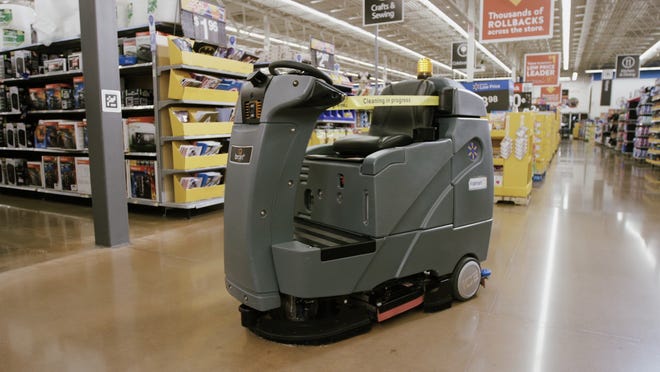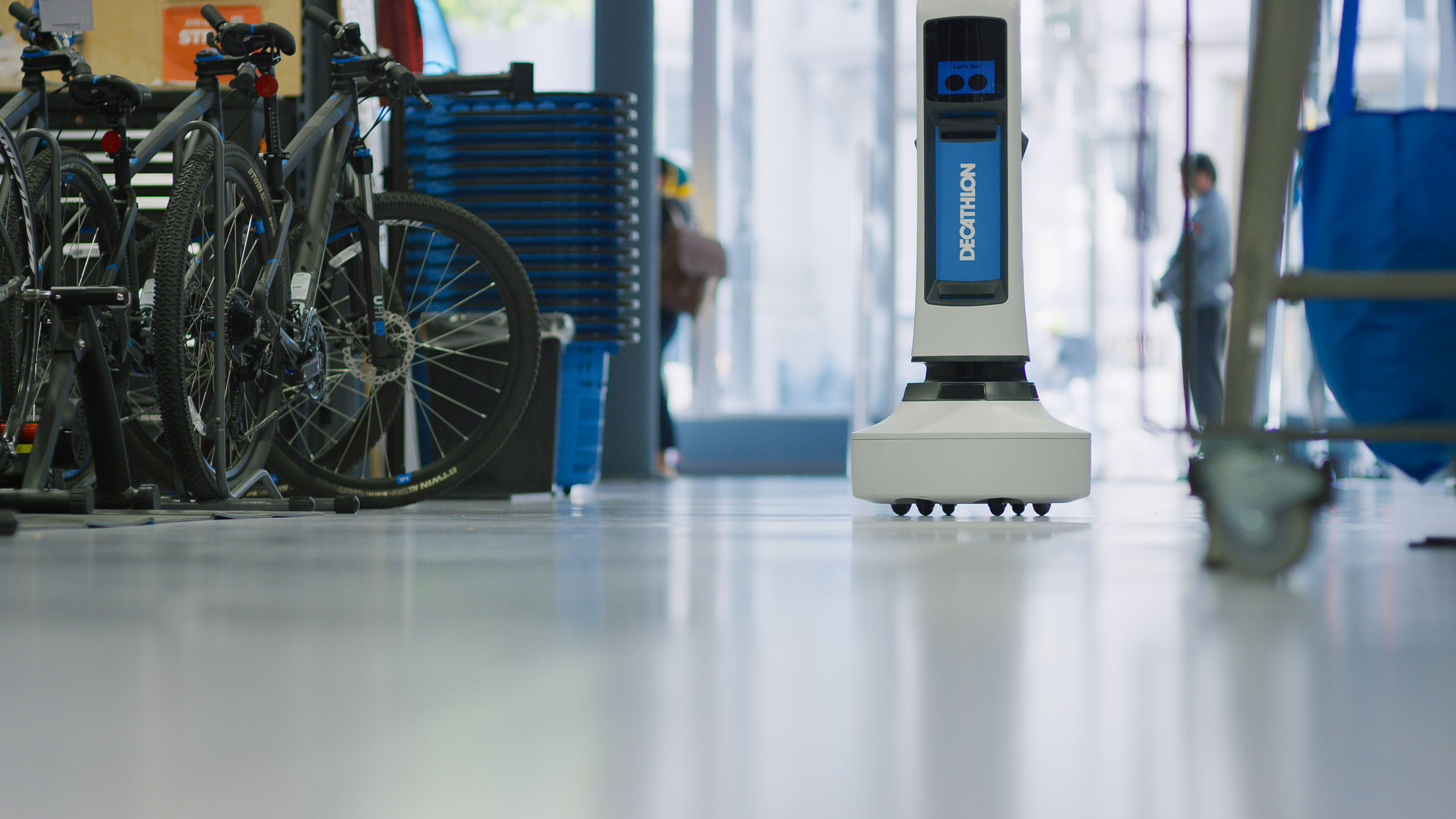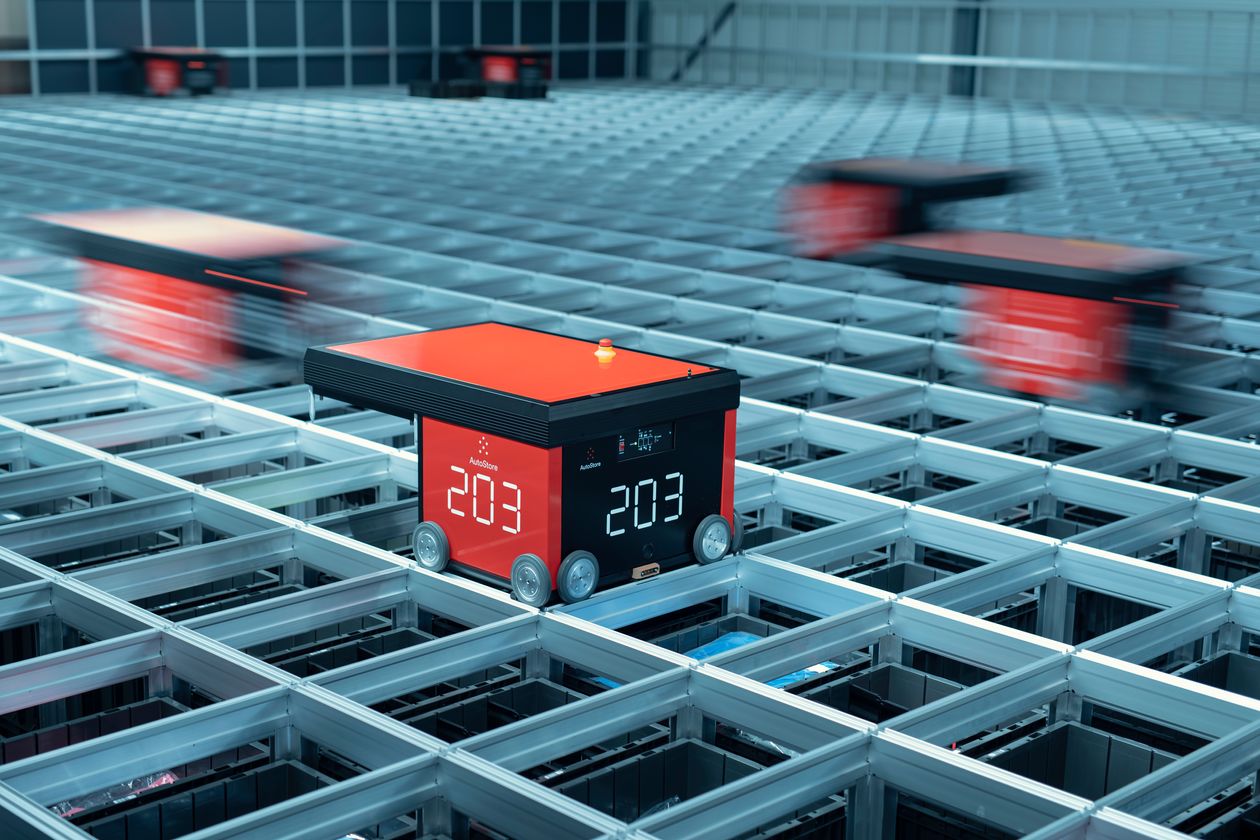Quick, what’s the first thing that comes to mind when you hear the word robot? It’s likely anything from a walking, talking C-3PO-like bipod to a wheeled cylinder-like R2D2 to an unstable computer like HAL 9000. The truth is, just about anything mechanized that can pull off human actions can be considered a robot. It doesn’t need to look like a human, either. Because robots don’t necessarily have to walk and talk or even think much, they can be deployed in many different ways, both consumer-facing and behind the scenes. The retail space is no exception. Social distancing and sanitization requirements over the past 14 months led to a surge in online ordering and a dearth of shoppers heading to the malls, which accelerated the use of certain types of robots in warehouses and brick-and-mortar stores. Some of those trends are here to stay, others not so much. Here’s a rundown of significant technologies and trends in the retail robots space.
What’s In Store
“The general trend is that we’re seeing more robots in retail stores,” says John Harmon, senior analyst at Coresight Research. “That’s picked up quite a bit during the pandemic. The major applications tend to be among mass merchandisers and grocery stores.” Lowe’s may have had its LoweBot roaming the aisles answering shopper questions as far back as 2016, and Best Buy still has mechanized kiosks in airports and other public spaces across the country, but most of the in-store robots operating today are to be found in grocery stores or big-box stores that sell groceries. And on that front, Harmon says, “Walmart is the leader.”

Since 2018, Walmart has used robotic floor scrubbers at many of its brick-and-mortar locations and continues to expand its in-store robotics initiatives at its Sam’s Club subsidiary, with some clever iterations. The 372 new Tennant T7 AMR floor scrubbers that the warehouse club recently deployed to its retail locations will soon also have AI-enabled scanners that check for out-of-stock or misshelved items, as well as gather inventory data, mounted on top of them. It’s an ingenious hack that gives new meaning to the concept of multitasking.
In January, Walmart announced that it would be expanding its use of market fulfillment centers (MFC), essentially mini-warehouses attached to or inside of brick and mortar stores that contain thousands of products including groceries and consumer electronics. Purchased items are retrieved by a mix of humans and robots and then placed on a table, where humans put orders together for pickup by customers. The system has been in place at a Walmart in Salem, NH since 2019.
In other countries, some big-box and warehouse clubs have deployed robots. For example, French big-box chain Carrefour’s stores in the United Arab Emirates are using Simbe Robotics’s “Tally,” a tall pillar-like robot on wheels that uses computer vision-powered cameras to scan store shelves for items that are out of stock, misshelved, or mispriced. It’s then able to alert human stockers, who can surgically correct any errors or restock shelves without having to find these issues themselves. Tally’s built-in AI software also develops insight over time around what products are selling out and correlates that with other data such as discounts, weather, dates, and the like, allowing for better inventory and supply chain management; imagine if Tally robots had been more widespread during the shortages of toilet paper, sanitizer, flour, and other staples during the first months of COVID quarantine in 2020.

Moving Right Along
While Walmart is proactive in its robotics strategy, it acts as a lean startup when it’s time to pivot. For the retailer, the reduction in human foot traffic in brick-and-mortar stores didn’t result in inventory-scanning robots as a long-term solution. Late last year, the company ended its partnership with Bossa Nova Robotics for an army of 1,000 stock-scanning robots at its stores. With more store employees scouring shelves to pick up delivery items in person for increased curbside pickups of the past 12 months, keeping track of on-shelf inventory was better handled the old-fashioned way. “It set the category back,” says Harmon. “I would say if they don’t work for Walmart, they probably won’t work for anyone.”
Walmart also recently pulled the plug on its automated pickup towers. Sort of a cross between Redbox kiosks and Amazon’s lockers, the pickup towers kept online purchases secure until customers came by in person, entered their information onto a screen, then sat back as the items were dispensed to them—not too different from a soda machine. With curbside service becoming the norm in 2020, and so many workers picking up online orders themselves and bagging them for consumers to pick up, these towers lost some of their relevance. The towers, at least, are technically on hiatus until Walmart figures out what to do with them as social distancing and mask requirements are removed and people are more comfortable going back to stores.
Walmart isn’t getting out of the robotics game by any means, however. “Robotics, along with a lot of other new and emerging technologies, will always have a role to play in terms of where we want to be both from the customer experience perspective but also an operational perspective,” said Walmart Executive Vice President and Chief Omni Strategy Officer Casey Carl to a Q&A session question posted by Dealerscope at the recent online Collision conference. “How will it make a better customer experience and how will it make it more operationally productive. If robotics is the right answer for that, then we’ll look at these sorts of things. We’re always testing new technology and innovations, asking ‘What could we do with this and how could we create more value for our customers?’” Such scrutiny and requirement for ROI will keep the robotics industry working hard to innovate and fine-tune its products, given Walmart’s size.
Other than Walmart, not many other retailers that sell consumer electronics or appliances are deploying robots in any meaningful way yet, which is surprising considering they are in the business of selling technology. “Somebody like a Best Buy could benefit a lot from robots fetching items for e-commerce in a fulfillment center,” says Harmon, “and certainly the trend has been for Best Buy and Target to ship from store lately. Best Buy’s new plan to convert some of the space in its stores to on-site warehouses and fulfillment centers falls in line with what Walmart is doing with its MFCs.
Big Box Boom
Nowhere has the push to automate been greater than in the warehouse and fulfillment center sector, a trend that has been growing ever since Amazon’s 2012 purchase of Kiva Systems. Renamed Amazon Robotics in 2015, the soup-to-nuts fulfillment center solution is a human-machine “cobot” setup, whereby autonomous wheeled robots grab merchandise from designated pods and deliver them to humans to pack for shipment. The e-commerce giant now is estimated to have deployed approximately 250,000 robots at its fulfillment centers across the globe, spurring on a robotics race among investors and companies looking to leverage new technologies.
And investors are taking note. Last month, The Softbank Group dropped $2.8 billion for a 40-percent stake of Norwegian robotics manufacturer AutoStore, which makes a warehouse robot known as “The Router” that maximizes storage space of products in big cubes, retrieving and re-organizing items on the fly at a superfast clip that has enabled it to create up to 25 percent more space for its warehouse partners. AutoStore currently has about 600 deployments around the world, many of which are small- and medium-sized e-commerce operations.

In recent years, Boston Dynamics has been better known for its two- and four-legged bipod and dog robots that could climb stairs or perform basic gymnastics and dance moves—some of the hardest robotics feats to pull off, but still not ready for mass business deployment just yet. Nevertheless, Boston Dynamics’s prowess with robotic legs gave it a particular edge with Stretch, the company’s first commercial robot, which was announced in April. Designed for warehouses, Stretch can move up to 800 boxes an hour with its versatile arm and sensor-laden smart gripper. Unlike many warehouse robots—Amazon’s included—that need to follow specific routes to move autonomously, Stretch’s computer vision capabilities are good enough to let it move around any space and easily recognize objects and boxes on its own
The state of retail robots, like so much technology, is a mix of booms and busts, though it’s clear that warehouse robots are here to stay and flourish, and they can be leveraged by big-box giants and independent retailers alike. In-store robots, at least of the pricey and non-janitorial kind, may be a work in progress for many retailers. “[Robots] cost a lot and it’s hard to get your money’s worth,” says Harmon. “This is why Walmart abandoned these inventory robots.” Walmart (and Amazon) can’t and should not be doing this alone. It might be time for some of the more deep-pocketed retailers that carry CE and appliances to leverage their tech DNA and see where they can innovate on the robotics front















